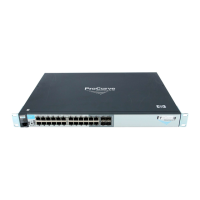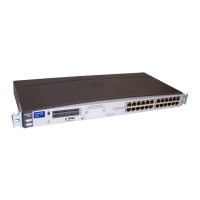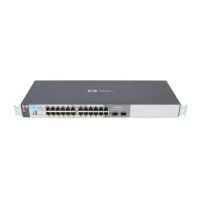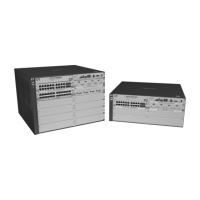Troubleshooting
Using the Event Log To Identify Problem Sources
These two messages report separate events involving
separate log throttle periods and separate counters.
W 10/01/06 09:00:33 PIM:No IP address configured on VID 100 (1)
W 10/01/06 09:00:33 PIM:No IP address configured on VID 205 (1)
.
.
.
Figure C-13. Example of Log Messages Generated by Unrelated Events of the Same Type
Example of Event Counter Operation. Suppose the switch detects the
following after a reboot:
■ Three duplicate instances of the PIM “Send error” during the first log
throttle period for this event
■ Five more instances of the same Send error during the second log throttle
period for this event
■ Four instances of the same Send error during the third log throttle period
for this event
In this case, the duplicate message would appear three times in the Event Log
(once for each log throttle period for the event being described), and the
Duplicate Message Counter would increment as shown in table C-3. (The same
operation would apply for messages sent to any configured SNMP trap receiv-
ers.)
Table C-3. How the Duplicate Message Counter Increments
Instances Instances Instances Duplicate
During 1st Log During 2nd Log During 3rd Log Message
Throttle Period Throttle Period Throttle Period Counter*
3
1
5 4
4 9
*This value always comprises the first instance of the duplicate
message in the current log throttle period plus all previous occurrences
of the duplicate message occurring since the switch last rebooted.
C-33
